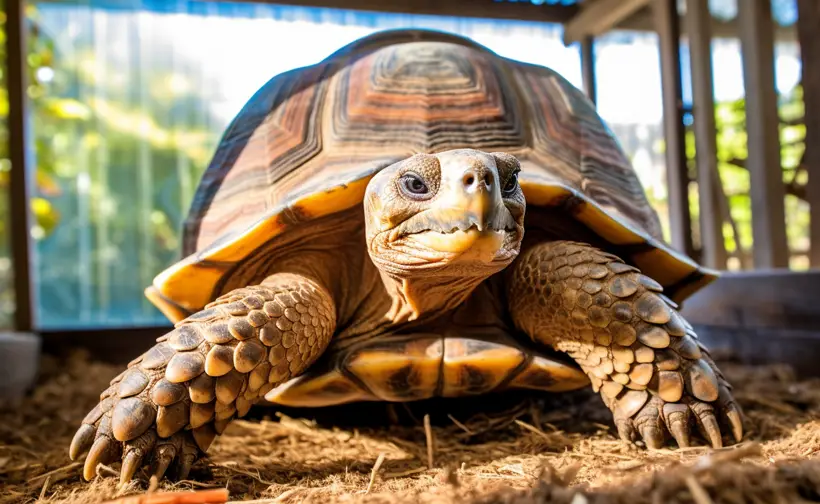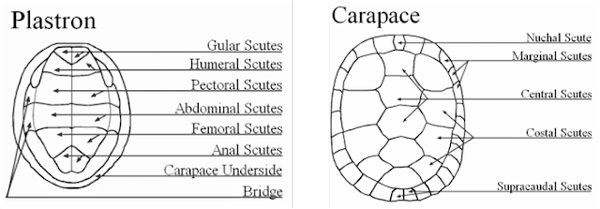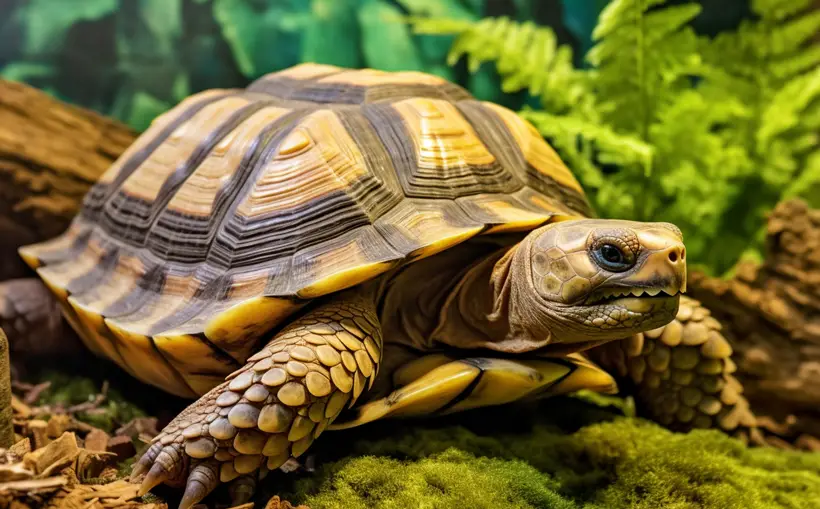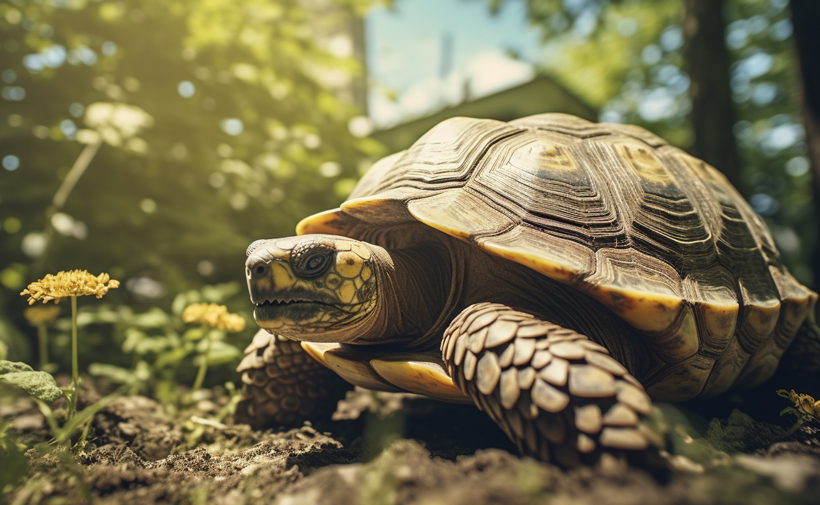How Strong Is A Tortoise Shell? Explained Facts With Scientific Data
Tortoiseshell- a camouflage for the species, is a mineral reservoir, defense organ, and armor to the muscles that helped them survive the extinction. These reptiles even outlived dinosaurs with the protection of their robust shell.
So, can you imagine how strong a tortoiseshell is? An average tortoiseshell possesses 36.4 MPa m1/2 fracture resistance, tensile strength between 19 MPa to 52 MPa, and 165.1 MPa flexural strength.
We have covered some amazing facts about the strength of tortoiseshells. To know further, go through the following segments.
How Strong Is A Tortoise Shell? Let’s Unlock The Mystery
Contents
A tortoiseshell features keratin, which gives strength to the structure. As stated earlier, an average shell can feature 36.4 MPa m1/2 fracture resistance. The overall shell structure contains a combination of 60 bones, enabling the tortoiseshell to be the strongest armor.

A tortoiseshell is more rigid than aluminum. Aluminum alloy features 14 to 28 MPa fracture resistance, whereas the tortoiseshell has 36.4 MPa m1/2 toughness resistance.
How much weight can a tortoise shell withstand? According to research on Turtle shells and mammal skull resistance to fracture due to predator bites and ground impact, a turtle shell can endure almost 200 times more weight than its actual body weight.
As per this video, the tortoiseshell can carry up to 620 pounds. But the weight needs to be distributed evenly. Check it out!
Turtles are considered to have less strong shells than tortoises. It means a tortoiseshell can withstand even more weight than a turtle shell.
Tortoiseshell, with aging, becomes thicker and therefore becomes stronger. Hence, an adult tortoise will have a more sturdy shell. Again, the shell strength varies from species to species.
Decode the Shell Structure: What Makes the Tortoise Shell So Strong?
There are basically three parts of the tortoise shell. They are stated below:

1. The Carapace
The dome-shaped, bone-infused structure covers the top of the tortoise’s body. Expanded ribs and the spine are fused beneath the skin to build the carapace.
2. Sceutes
Scutes are placed on top of the carapace and are made of Keratin, which is the actual reason for the shell’s strength. The scutes protect the carapace from scratches and cuts.
3. The Plastron
It is the bottom part of the shell and is not as strong as the carapace. The plastron is for mild protection (to protect the bottom part from sea predators).
Other than these parts, a bridge connects the carapace and the plastron. It also protects the remaining parts that the carapace and the plastron do not cover.
Is a Tortoiseshell Indestructible? Or Can It Be Broken?
To be precise, a tortoiseshell is extremely tough but not indestructible. Certain factors can cause a break on a tortoiseshell.

Shell Rot or Shell Ulcer
This is one of the primary reasons that lead the shell to breakage. Mostly, bacteria infection and pressure-oriented attacks are the main reasons. Also, dehydration, poor diet, or mild breakage in the shell can cause this issue.
SCUD (Septicemic Cutaneous Ulcerative Disease)
Though it is primarily a shell disease, it can spread to the liver and can do fatal damage to the tortoise.
Pyramiding
A dysfunction that causes an unnatural peak on the tortoise shell. The abnormal growth of the scutes leads to this situation. Malnutrition is the main reason and is more of a husbandry issue (wild tortoises rarely experience it).
MBD(Metabolic Bone Disease)
It gradually softens the shell due to a lack of vitamin D, calcium, and UVB rays. MBD can also spread to the bones due to calcium deficiency.
These are the clinical issues that can malform or harm the tortoiseshell. Other than that, other factors can break the tortoise shell.

Fierce Pressure-Oriented Force
The risk of breakage is low if the pressure is distributed equally all over the shell. But a tortoiseshell can shatter when the pressure is fierce and is oriented to a smaller shell surface.
Animal Attacks
As per a research prediction, a 360 kg adult alligator can bite and break a 2 kg tortoise shell. Besides the alligator or crocodile, honey badgers, sharks, and birds can bite through the tortoise shell. Raccoons and coyotes are often seen to nibble the shells’ sides or softer portions.
Again, falling from extreme heights can cause cracks in tortoiseshells.

Reference Questions
Though the segments above cover all the information regarding the tortoiseshell strength. Yet we have presented some FAQs as a bonus for our readers.
A bullet is fired with 3000 kg per hour muzzle velocity and can hit the tortoiseshell at 100 – 3300 ft/lb speed. This fierce speed can obviously create a crack or, if not a crack, can cause harm to the internal organs.
Moreover, small cracks on the shell or internal organ damage can lead to fatal consequences for the tortoise. Hence, the tortoise may survive the bullet, but the shell is not entirely bulletproof.
A tortoiseshell is a combination of bones; the sternum, ribs, and spine are infused all together. It can be cracked with anything that can crack a bone. However, the required pressure is determined by the shell’s thickness and the tortoise’s age to crack a tortoiseshell.
Iron has a vast range of fracture resistance between 25 MPa m1/2 to 60 MPa m1/2. And the tortoiseshell has 36.4 MPa m1/2 fracture resistance. Hence, if the cast iron selected for testing falls under the 36.4 MPa m1/2 parameter, the tortoiseshell will be stronger.
Conclusion
A tortoiseshell, a protection organ infused with bones, plays an integral part in the incredible lifespan of this species. A tortoise cannot survive without the shell as it combines the bones, nerve endings, and spinal cords.
Cracks or aggressive attacks on the shell can lead to severe internal organ damage. Even viral, fungal, and bacterial infections can intrude through the cracks. Be it in the ocean or on the earth, to survive, tortoises depend on their shells.


